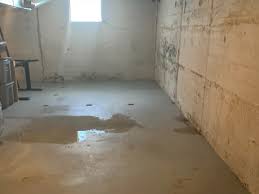Preventing Basement Water Intrusion: Tips and Best Practices
Key Takeaways
- Understanding common causes and solutions for basement water issues.
- Insights into effective waterproofing techniques and materials.
- The importance of regular maintenance and expert consultation.
Table of Contents
- Common Causes of Basement Water Intrusion
- Best Practices for Prevention
- Effective Waterproofing Materials
- Importance of Regular Maintenance
- When to Seek Professional Help
Common Causes of Basement Water Intrusion
Basements often encounter water intrusion due to several well-known causes that diligent homeowners should monitor. Poor drainage systems play a pivotal role, where inefficient paths for runoff water lead to pooling around the foundation. This accumulation can eventually permeate basement walls, necessitating robust basement waterproofing Kansas City measures. In addition, improper grading around the home may direct stormwater towards rather than away from the structure, compounding the risk of leakage.
A more sinister yet prevalent cause is hydrostatic pressure. This occurs when overly saturated soil pressures basement walls, forcing water through any aperture, such as cracks or porous materials. Homeowners’ challenges are identifying these issues early and implementing strategies that effectively mitigate them.
A study by the Environmental Protection Agency contextualizes the scale of this issue by pointing out that inadequate drainage is frequently implicated in foundational damages across residential properties. Awareness and preemptive action are, therefore, crucial for preservation.
Best Practices for Prevention
Shielding basements from water ingress involves a multi-faceted approach rooted in vigilant environmental management. Key among these preventative measures is ensuring that the terrain surrounding the house is graded correctly. Ideally, the landscape should be sloped so that water drains away from the home’s base efficiently. Such earthwork should be complemented by a robust network of gutters and downspouts, maintained regularly to ensure they remain free of obstructions and function optimally.
Gutters are the home’s first defense against roof runoff, capturing and channeling rainwater away from the foundation. Downspouts, in turn, should discharge this water at a safe distance from the house, typically no less than five feet, mitigating the risk of water pooling around the base.
Additional measures might be necessary in regions typified by high water tables or historically poor drainage. Installing a sump pump system can act as a failsafe, actively removing subfloor water before it becomes problematic. These systems are particularly beneficial during periods of heavy rainfall, offering peace of mind with their reliable performance over time.
Effective Waterproofing Materials
The choice of waterproofing materials plays a decisive role in protecting basements from water damage. Sealants, for example, offer a straightforward yet effective method for addressing minor cracks and preventing moisture ingress. Applied directly to exposed surfaces, they act as a barrier that repels water and enhances the durability of basement walls.
For a more comprehensive solution, homeowners might consider employing waterproof membranes. These are specifically designed to form an impermeable layer on surfaces, effectively halting moisture at its point of origin. Such products are indispensable when dealing with larger areas of concern, particularly in old or inadequately sealed structures.
Drainage mats can complement these approaches and be integrated into the underground environment. Installed against exterior basement walls, they channel incidental water to drain tile systems, preventing hydrostatic pressure buildup. Selecting waterproofing materials should reflect each property’s specific challenges and environmental conditions.
Importance of Regular Maintenance
Maintaining a dry and secure basement is not a one-time effort but an ongoing responsibility. Regular maintenance practices are essential to identify potential vulnerabilities before they escalate into serious issues. The key to this is routinely inspecting your property’s gutter system, ensuring it remains clear of debris throughout the year.
Additionally, monitoring the integrity of your basement’s surfaces can help preemptively catch and repair any emerging cracks. Sealing such fissures early can dramatically reduce the likelihood of water infiltration, maintaining the structural health of the basement.
HGTV’s insight illustrates the cost-effectiveness of sustained maintenance. By proactively addressing minor issues, homeowners can defer or avoid costly remedies while extending the life of their property’s foundation.
When to Seek Professional Help
There are instances where the complexity or extent of water intrusion renders DIY solutions inadequate. In such scenarios, seeking the expertise of a professional waterproofing contractor is often the most prudent course of action. These experts are equipped to perform comprehensive evaluations, drawing from their experience to uncover nuanced problems that may evade the untrained eye.
Professional services encompass advanced diagnostic tools and techniques to tackle persistent water issues effectively. Moreover, professionals can guide homeowners in selecting materials and solutions tailored to their home’s unique requirements, ensuring a long-lasting, watertight environment.
Recognizing the need for intervention and acting decisively can safeguard your home from more severe damage, offering both financial and emotional relief through the assurance of a professionally managed solution. Engaging experts can ensure that all potential solutions are explored and that the most effective measures are implemented to protect your home.







